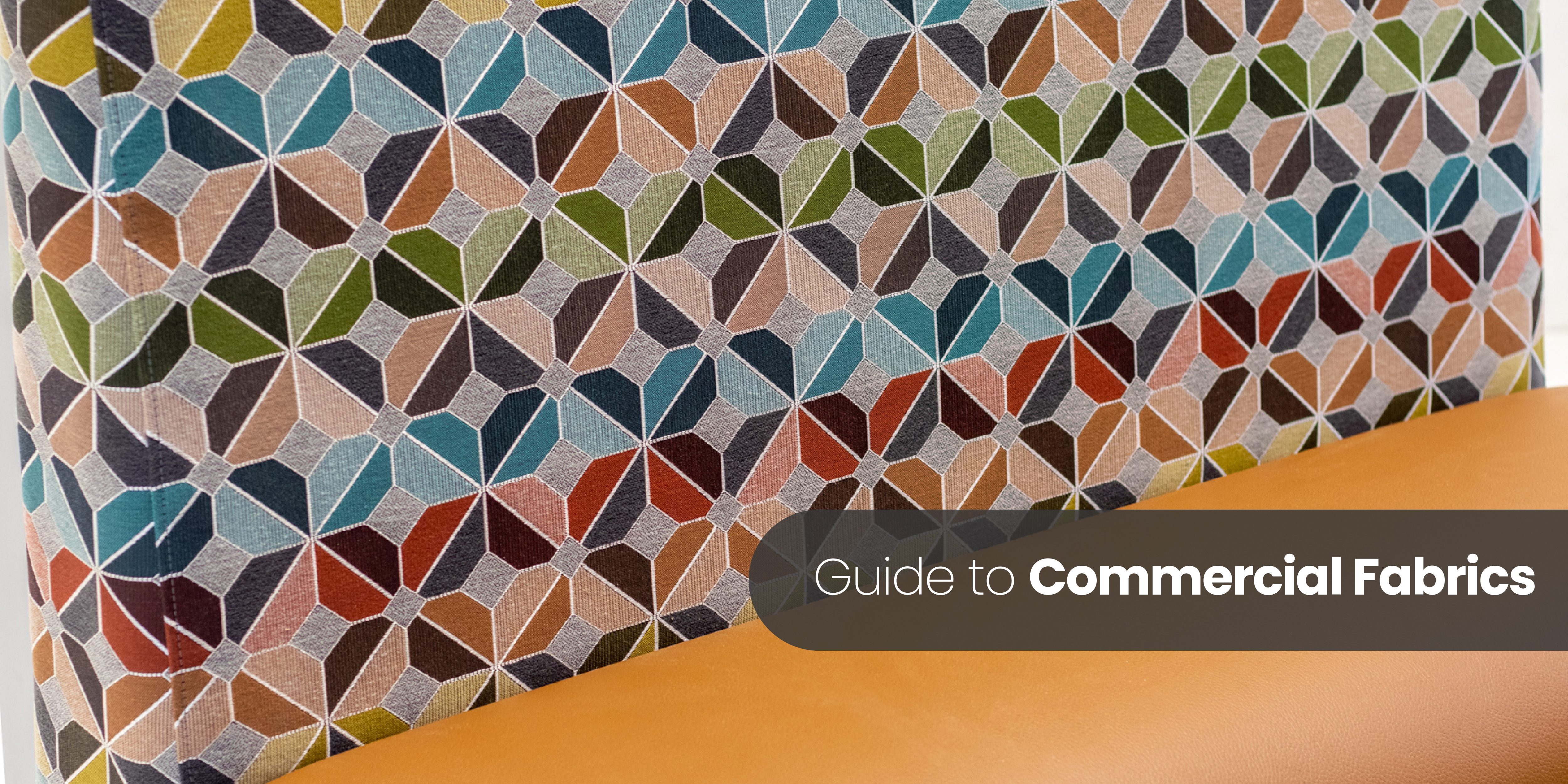
12 Aug Guide to Commercial Fabrics
Commercial furniture at bowling centers and family entertainment centers has a unique set of challenges. The high-traffic, all-ages nature of the entertainment industry demands durable furniture upholstered in an equally durable commercial-grade fabric. Bowling centers receive wear & tear daily on their upholstery from messy eaters and cranked-up kiddos. Keeping up with your commercial-grade fabric is imperative. Knowledge of commercial fabric types, treatments, abrasion resistance, and cleaning guidelines will save you time and money.
Fabric Types
Commercial fabrics come in three categories: woven, coated, and leather. Woven fabrics are defined as fabric that has been constructed through a fiber-weaving process by a loom.
Examples of woven fabrics include the following:
- Viscose
- Natural fibers (wool, mohair, linen, cotton)
- Synthetic fibers (olefin, acrylic, polyester)
Coated fabrics are fabrics that have been covered with a layer of liquid or film which provides added protection, then texture is added to the textile by an embossing process.
Examples of coated fabrics include the following:
- Vinyl
- Polyurethane
- Silicone
- Polyester
Leather fabrics are created from animal rawhides, which are tanned and treated, then finished and/or embossed.
The best choice for bowling alleys or family entertainment centers? Coated fabrics. Coated fabrics can undergo a significant amount of duress and they are easy to clean while being cost-effective. Woven fabrics can be used to add some texture to your furniture, but be cautious of where the woven fabric is applied. If applied to the seat cushion woven fabric could be easily snagged, but if you apply it to the back cushion then it will fare better over time. Stray away from natural fibers, as these are the most easily damaged and are more difficult to clean. Leather should almost never be used in a bowling alley or FEC setting because it’s just too expensive and hard to maintain.

Fabric Treatments
Fabric treatments are applied to textiles to imbibe them with protective properties. Fabrics with treatments will sometimes be referred to as ‘Performace Fabrics’, as they are designed to be heavy-duty and withstand long-term use. The most common treatments for fabrics are Crypton, Alta, Nanoguard, and Nanotex. Crypton treatments are applied to make commercial fabrics stain, odor, and mildew resistant. Crypton is the only treatment that is sanctioned as disinfectable by the EPA. The Alta treatment is formulated so that it repels oil and water. When liquid touches an Alta fabric, it will form a bead and roll off instead of permeating the textile. The Nanoguard treatment is a permanent moisture barrier that is often used in combination with the Nanotex treatment. Nanotex offers spill and stain resistance. When Nanoguard and Nanotex treatments are conjoined it creates an impervious textile.

Abrasion Resistance
Commercial fabrics undergo a series of tests to judge their ability to withstand long-term use. The Wyzenbeek test is for synthetic fabrics, like vinyl, while the Martindale test is for natural fibers, like wool. During the Wyzenbeek test, duck cloth presses against the test fabric and passes back and forth to constitute what is called a double rub. Double rubs are the unit of measurement for commercial-grade fabric durability. Fabrics with 30,000 double rubs or more are considered commercial-grade and rated for high-traffic, public space use. The Martindale test uses a piece of worsted wool cloth as the abradant while moving in a figure-eight motion to create friction. The Martindale test counts the ‘cycles’, instead of the double rubs. Any fabric over 40,000 cycles is suitable for commercial use.
We recommend using a fabric with at least 100,000 double rubs for bowling alleys and family entertainment centers. Our standard vinyl for our bowling sofas and upholstered seating, Patriot Plus by Spradling, is tested for 200,000 double rubs making it a smart choice for entertainment furniture.
How to Clean Commercial Fabrics
Always refer to the fabric manufacturer’s website for cleaning instructions! Commercial fabrics can be made from a vast array of fiber types and you have no idea what will happen when they react with a solvent. Fabric manufacturers provide detailed cleaning guidelines and lists of approved cleaners & disinfectants for each textile type. A majority of fabric manufacturers will include warranties with the purchase of their products, however, warranties will be voided if there is evidence of improper cleaning products being used.
Our standard Spradling Patriot Plus vinyl can be cleaned using the following guidelines:
- Clean the whole surface in circular motions using pH-neutral hand soap and water (1 part soap to 9 parts water). Wipe with a clean damp cloth to get rid of any excess soap. Repeat as needed and then let dry. Repeat this process weekly to prevent build-up.
- If any build-up can’t be removed with soapy water, use the following as a last resort: 1 part isopropyl alcohol to 1 part water. Remember, using alcohol on a regular basis can affect the properties of the product.
- Once a month, you can use a soft-bristle brush for deeper cleaning.
- View a list of approved cleaners here.
Please never use the following on Spradling Patriot Plus vinyl:
- Solvents like paint thinner, Varsol, acetone, whiteners, waxes, silicones or detergents, and/or cleaning products that are not pH neutral.
- Cleaning tools like plastic or wire sponges, or hard-bristle brushes.
- Cleaning products with more than a 50% alcohol content.
Trusted Fabric Manufacturers
We frequently work with and recommend the following fabric manufacturers for bowling centers and family entertainment centers:
Need help picking a commercial-grade fabric for your furniture? We can help you decide what fabric specification would work the best. Start a quote with us today or request a custom furniture layout.


